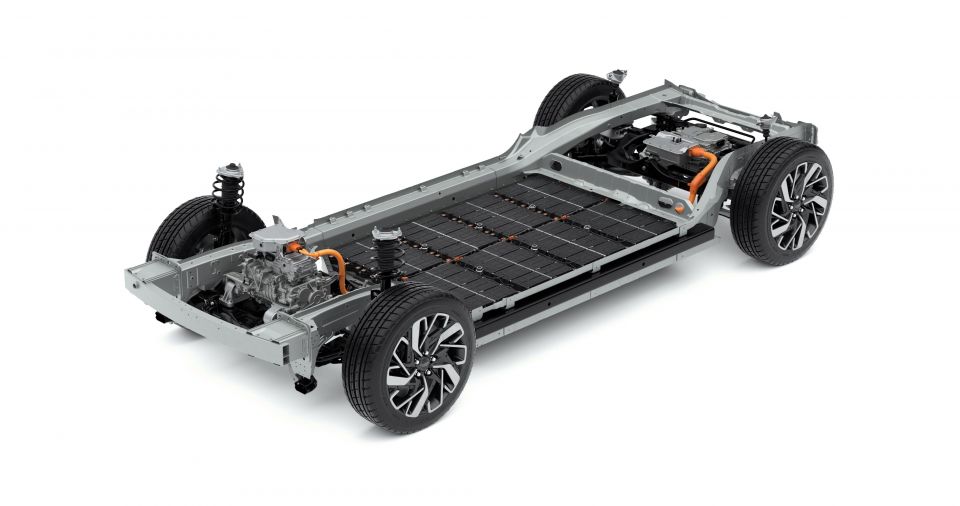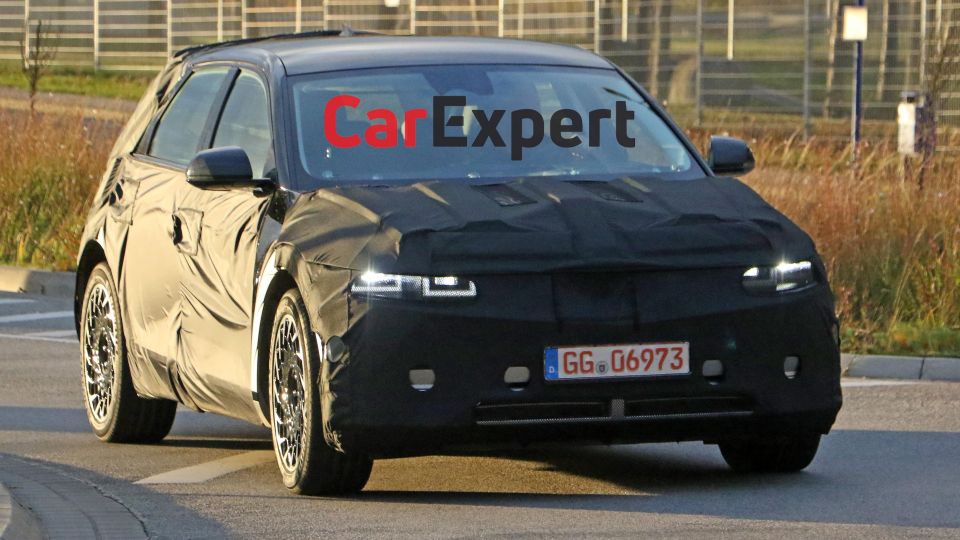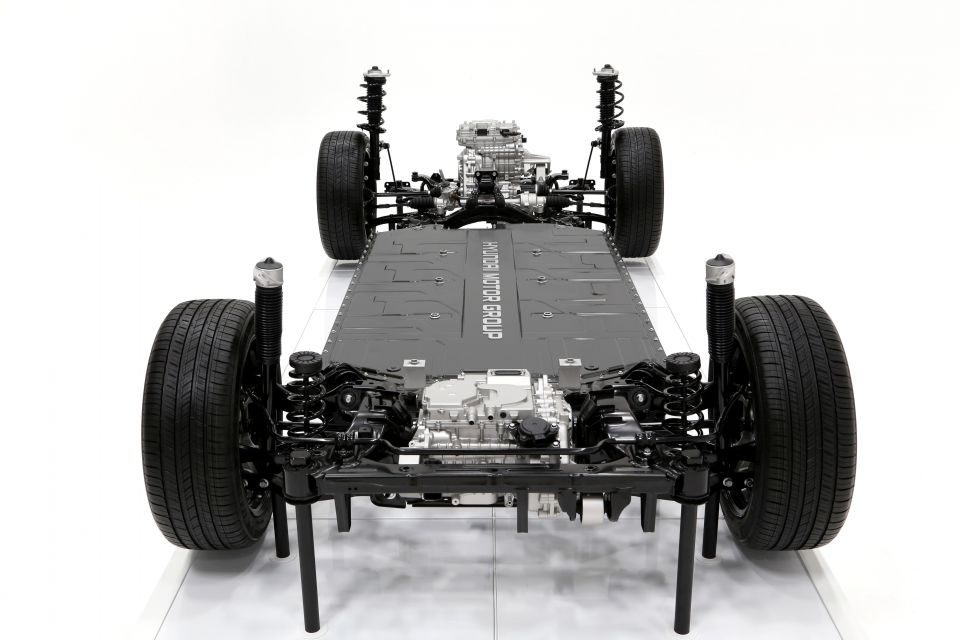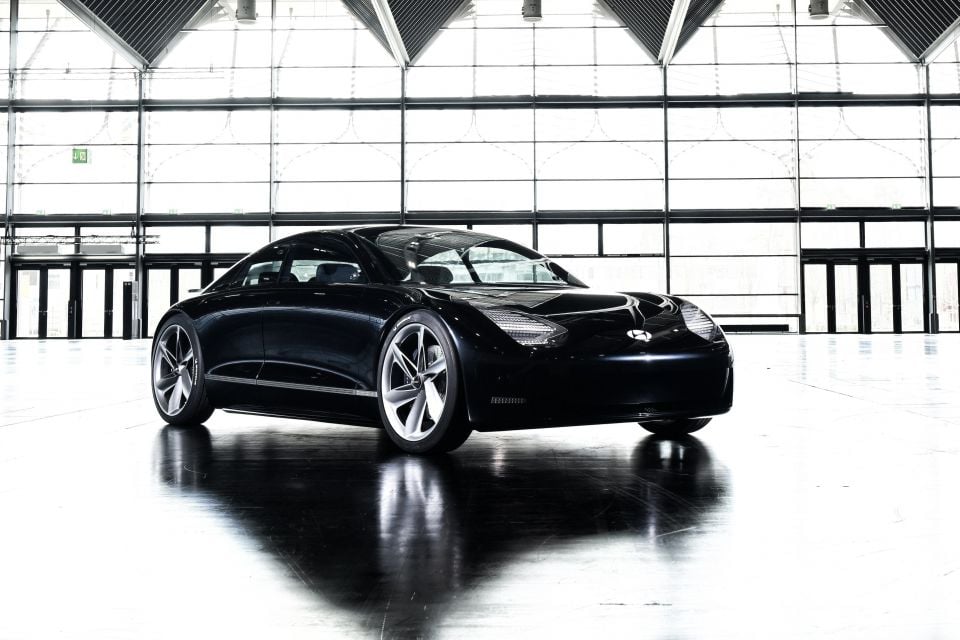

Damion Smy
Boxy new KGM Musso unveiled to take on HiLux and Ranger ahead of Australian launch
3 Hours Ago
Hyundai has bold plans to accelerate into the world of electric cars, and the E-GMP will play a critical role.

Contributor


Contributor
Meet the basis of Hyundai’s electric future.
The rear-wheel drive Electric Global Modular Platform (E-GMP) supports batteries big enough for more than 500km of range, and supports motors that’ll propel it to 100km/h in less than 3.5 seconds.
It’ll underpin everything from sedans to high-riding crossovers and SUVs. The platform will debut in the Ioniq 5 SUV for Hyundai, set to touch down locally during 2021, and in a pure-electric Kia set for reveal next year.

They’ll be followed by the Ioniq 6, a sedan based on the slinky Prophecy concept, in 2022. The Ioniq 7 is a large SUV that’ll launch in 2024.
Hyundai plans to introduce 23 battery-electric cars and sell 1 million examples by 2025.
Like the Porsche Taycan, the e-GMP platform will make use of an 800V architecture for ultra-rapid charging at up to 350kW. That means an 80 per cent charge in just 18 minutes, or up to 100km of range in just five minutes connected to the right kind of charger.
Unlike the chassis underpinning the current Hyundai Ioniq and Kona Electric, along with the Kia e-Soul and e-Niro, the e-GMP has been designed from the ground up to support electric vehicles.

The electric motor, transmission, and inverter are packed into a single module to save space and weight. Hyundai claims the motor has a maximum speed 70 per cent higher than its existing units, allowing for stronger performance.
Although it’s rear-wheel drive as standard, the e-GMP platform will also support dual-motor all-wheel drive. When it’s required the second motor will kick in to provide more performance or better traction, but otherwise it can be decoupled to aid efficiency.

Hyundai says the wheel bearings and driveshafts have been integrated for the first time, and cars on the platform will have a multi-link rear suspension.
The battery will be mounted between the axles, and is backed by a dedicated cooling block structure in the platform. Hyundai claims its lithium-ion batteries 10 per cent more energy dense than existing ones, allowing them to be lighter, slimmer, and mounted lower in the chassis.
Coupled with a long wheelbase and short overhangs, the slimmer battery pack is designed to free up more interior space than is possible with a conventional internal-combustion platform.

Following in the footsteps of the Mitsubishi Outlander PHEV Exceed and Nissan Leaf, the e-GMP platform will be able to act as a generator and power 110/220V machinery, or to directly charge another stricken electric car in a pinch.
“E-GMP is the culmination of years of research and development and brings together our most cutting-edge technologies,” said Fayez Abdul Rahman, senior vice president of vehicle architecture development centre for Hyundai Motor Group.
“Our BEV line-up will evolve and be strengthened by this innovative new platform.”
Scott Collie is an automotive journalist based in Melbourne, Australia. Scott studied journalism at RMIT University and, after a lifelong obsession with everything automotive, started covering the car industry shortly afterwards. He has a passion for travel, and is an avid Melbourne Demons supporter.


Damion Smy
3 Hours Ago


Damion Smy
4 Hours Ago


Damion Smy
6 Hours Ago


Damion Smy
8 Hours Ago


Damion Smy
9 Hours Ago


Damion Smy
10 Hours Ago